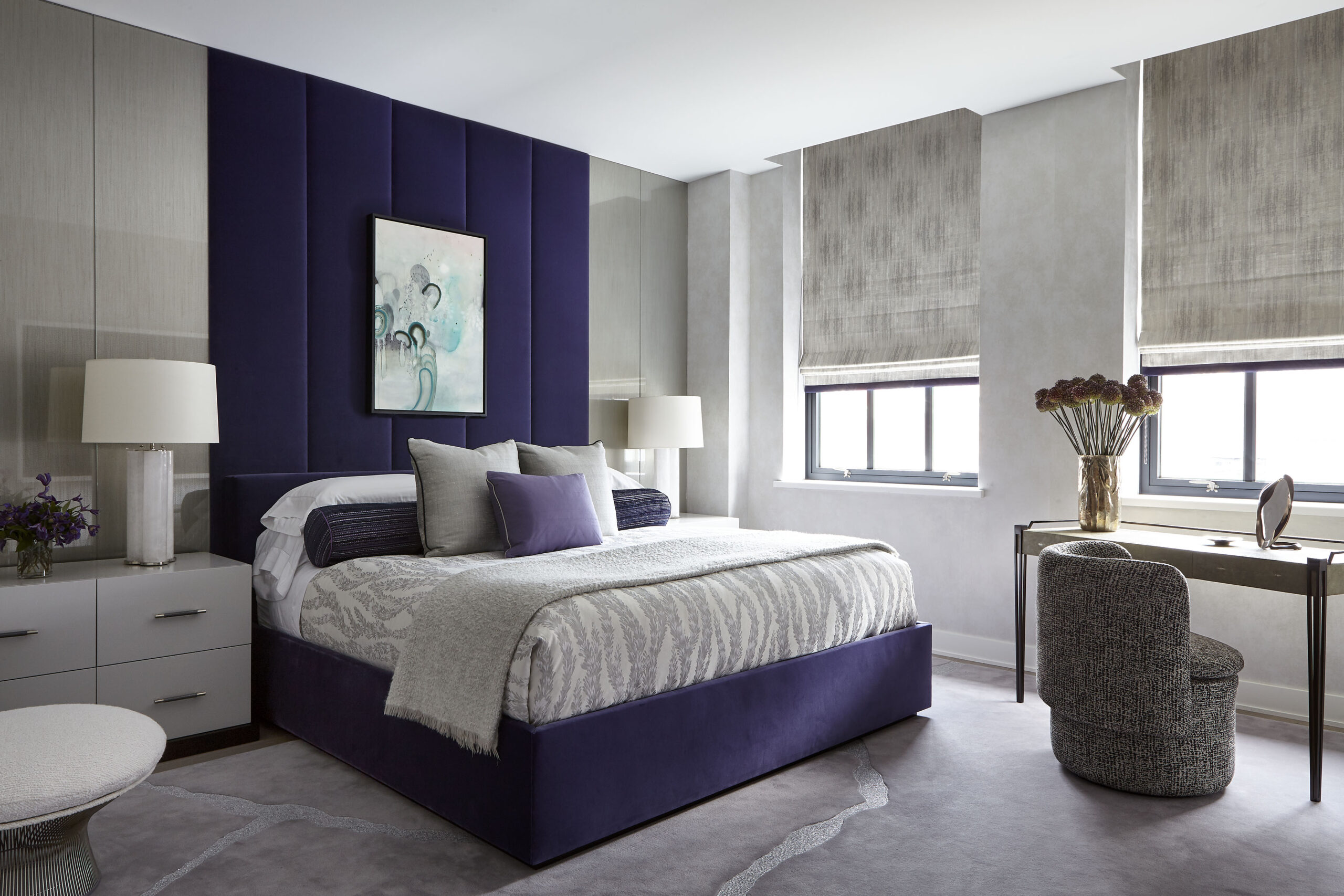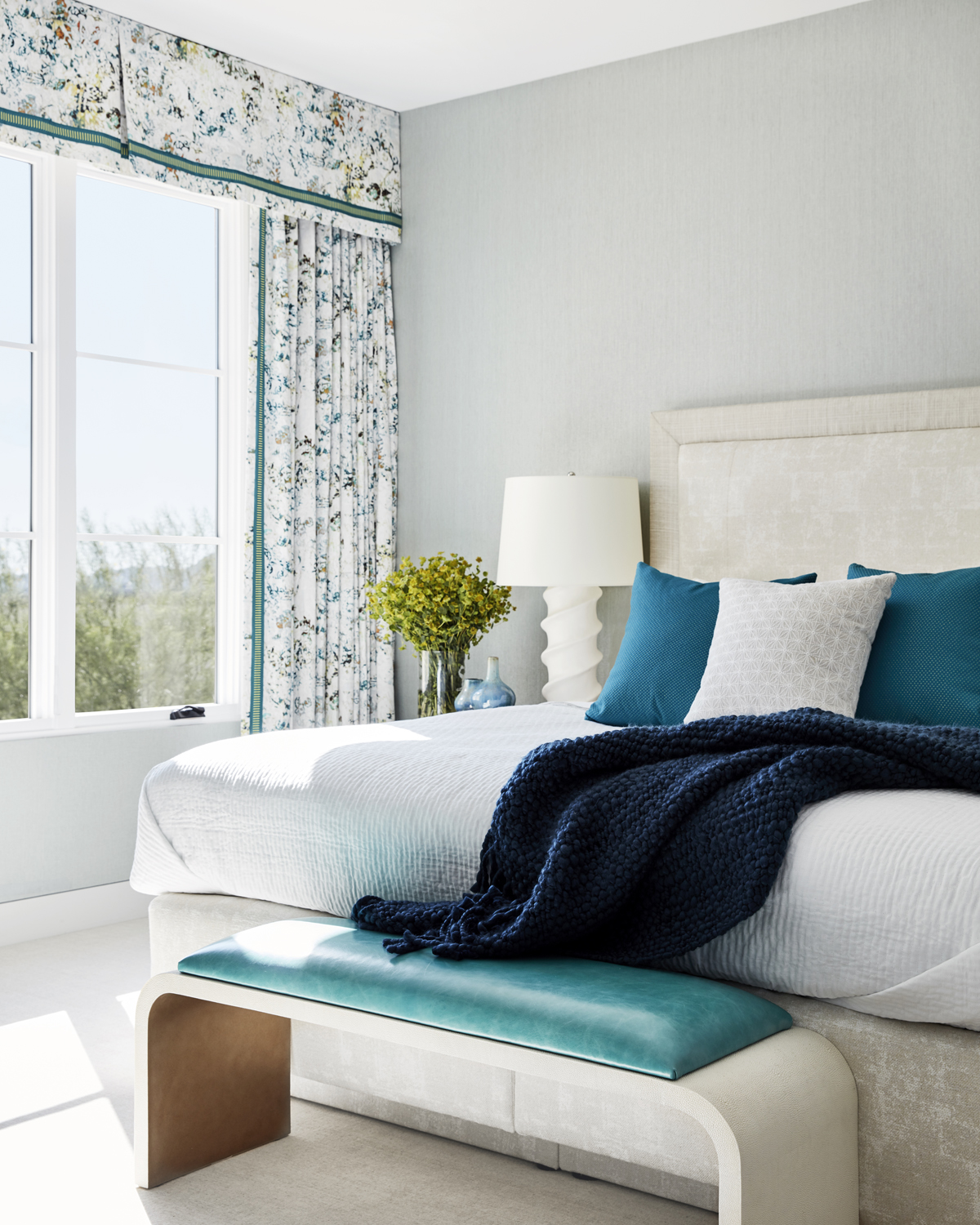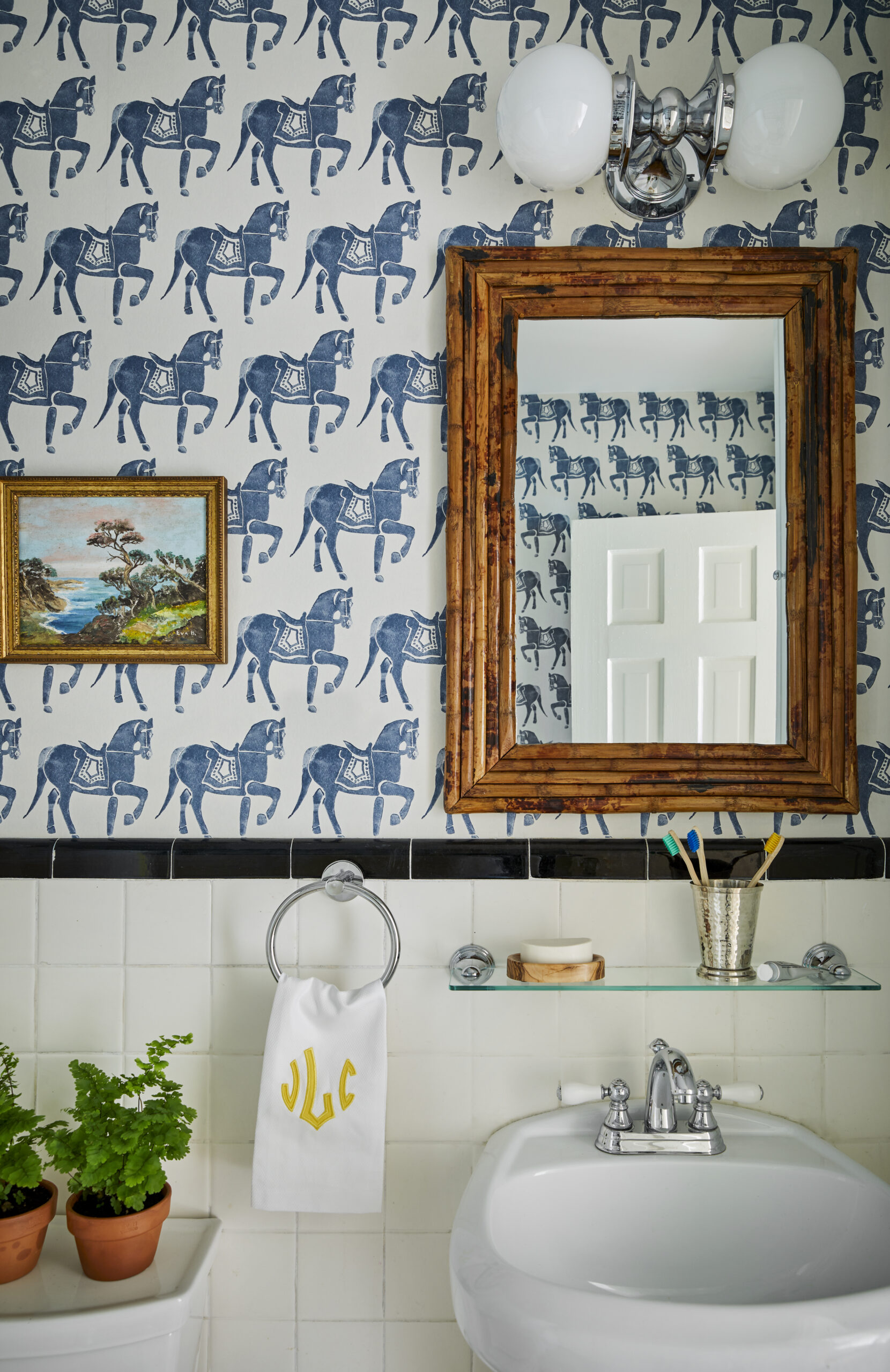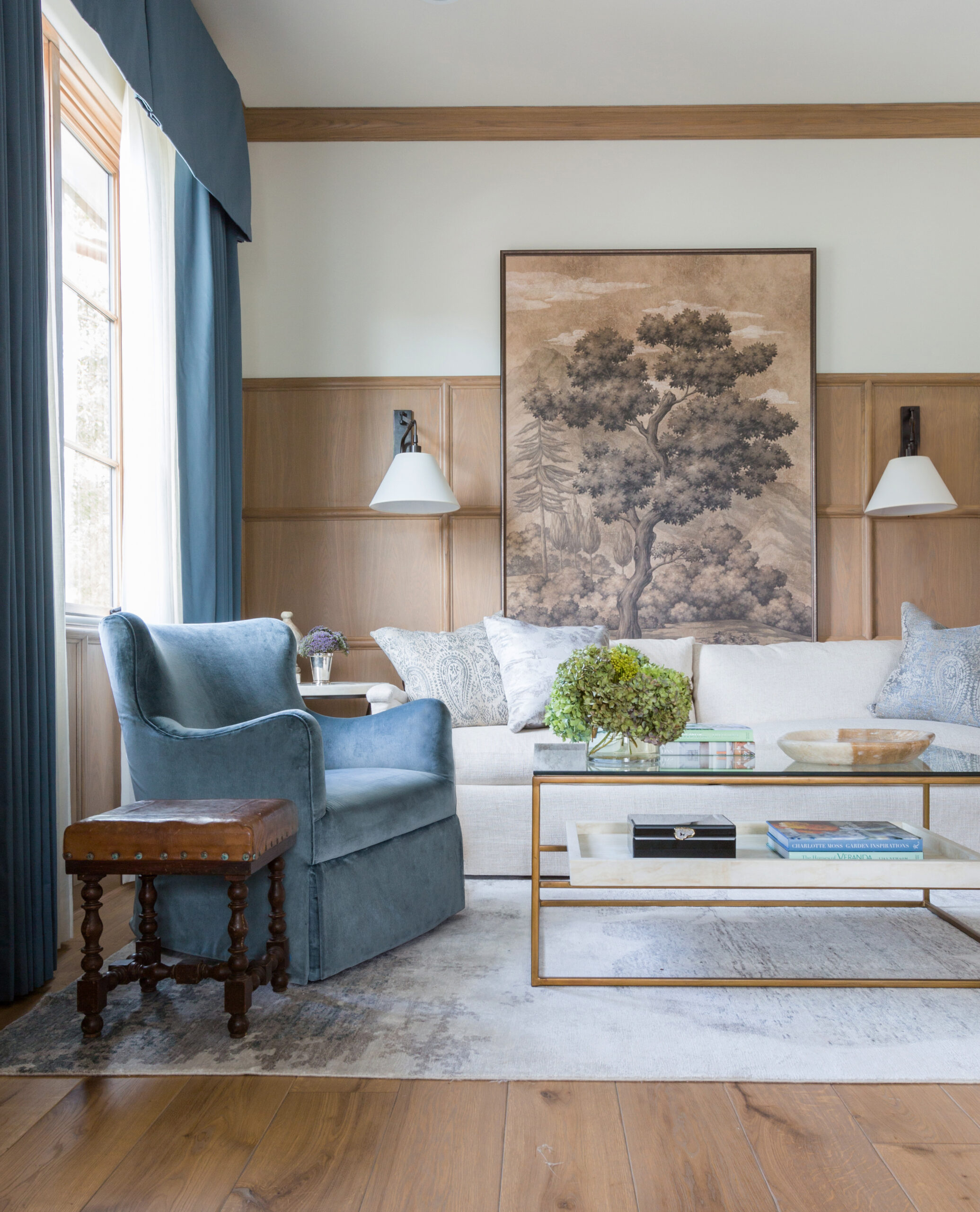It’s natural to want a bigger piece of the pie, but eat too much and you might make yourself sick. So what are the best strategies for taking your interior design business to the next level without getting heartburn? For answers, we turned to two of the best—and biggest—in the business: Margaret McMahon, who manages a worldwide team as Senior Vice President and Global Director at Wimberly Interiors, and Jamie Drake of Drake/Anderson. They joined Benni Frowein, CEO of Schumacher Europe and Middle East, to dole out some real-world advice for leveraging your strengths and knowing when to make a move.

Helmed by design partners Jamie Drake and Caleb Anderson, the New York-based firm Drake/Anderson works on both residential and commercial projects across the globe. Their elegant sensibility is on full display in this renovated Tribeca loft, where luxe textures soften industrial lines. The Roman shades are edged in Schumacher’s Sargent Silk Taffeta in Violet.
Joshua McHughWhy Is a Bigger Firm Better?
The question (and answer) may seem obvious, but if your business is bigger, you can take on more and different work. “A team of 14 allows us to do more, while a team of two or three is quite limited,” says Drake. One caveat, though: Bigger does not necessarily mean more profitable. Drake’s design business was at its largest with 24 employees, which shrunk to 14 after the economic downturn in 2008, and it has stayed at that size ever since. “We actually grew our dollar volume a lot after 2008, and our productivity too. So it taught me about staying tight and staying focused.”
Don’t Make Any Sudden Moves
Interior design businesses, especially new ones, tend to have income flows that feel like a rollercoaster ride of peaks and valleys. The peaks, cautions McMahon, can be deceptive. “Don’t build a church for Easter Sunday,” she says. “And don’t grow just for the sake of it. You have to look at the landscape and see your opportunities and honestly assess your potential.” And be especially cautious about making investments or hiring new staff until you’ve got clients nailed down and work in the pipeline. “You may have to roll up your sleeves and work a little harder for a while, but especially in this volatile climate, you don’t want to overextend yourself.”
So how do you know when you’re ready to hire? “When you are tossing and turning all night long from stress about how you’re going to get everything done,” says Drake. “You certainly need to be attuned to hiring somebody when you can afford to, but you also have to see a little bit ahead to the next step and know that you’ll still be very busy.”
Strategies for Growth
If you know you want to grow your business but you’re not in a strong enough position to take on staff, how do you get there?
“We’re in a business that doesn’t require any capital,” says Drake. “All you need is a phone and a client.” Instead of focusing on hiring more people and hoping the business comes in, he suggests attracting more clients first—because their money is the source of your capital.
Drake and McMahon’s number one suggestion for finding clients: networking. McMahon says it’s all about knowing where to hunt. For residential work, turn to realtors groups; for hospitality work, talk to purchasing agents and furniture manufacturers and people at the D&D building, share information, partner with someone in another region. Basically, talk to everyone and anyone! And get involved in the community. Drake recounts how his work first got published in national magazines because of the volunteer work he did for the American Society of Interior Designers (ASID). “Those editors didn’t know me, but they were sponsors of the events,” he says.
Their number two suggestion? Be a good person. Treat people how you’d want to be treated because that’s what will bring you more work. “If you’re nice and charming, and you give back, that will lead someone to say, ‘Oh, you need a designer? I think you should call my friend’,” says Drake. “It’s all woven together, so keep your thread clean and the knots and bows pretty.”

Drake/Anderson dressed this light-filled bedroom in a full spectrum of blues. A medley of textures—rich leather, luxe linen—adds dimension. The walls are in Schumacher’s Gilded Linen in Mineral.
Joe SchmelzerAdmin Staff Might Be the Answer
You don’t necessarily have to hire another creative in order to take on more clients. “My first employee was someone to do the bookkeeping and the purchase order production because that was what the part I didn’t want to do,” says Drake. Hiring administrative help freed him up to spend more of his time designing—and attracting new clients.
Whoever you hire, be sure their skills complement yours. “The most efficient use of your time is what you’re best at,” says McMahon. “You should be very honest with yourself about what your skills are, and figure out who you need to hire to supplement that.” If you’re not good at sales, for example, find someone who is!
In the end, you may decide that bringing on a business partner who splits the risks—and rewards—is the way to proceed. “I’m 59, and I have clients in their 20s and 30s, so I wanted to make sure I continued growing and my younger clients continue getting service,” says Drake. “So now I have a real partner who is in his 30s because I decided that was the best way for me to reach my goals.”
What About Licensing Deals?
“The reality is unless you have a brand name, you’re not likely to get a deal,” says Drake. Although a licensing deal can bring in a steady income, he cautions people not to chase them because he knows many lovely, talented and charming designers who have tried for years and never gotten one. “It’s just not realistic.”
A Better Source of Reliable Income
“Let’s call it the magic of the return client,” says McMahon. While a licensing deal may not be in your future, you are likely to have the same client for 30 years if you do an outstanding job. “I’ve been fortunate enough to renovate the same hotel three times. It’s about doing great work, being there for your clients and being passionate.”
Adds Drake: “We have projects that we’ve been continually working on in one fashion or another for decades. Some of it is just maintenance: refresh this, recover that, order more sheets,” he says. “But eventually it’s ‘Let’s redo that bathroom’.” In short, keep your clients happy and the work will keep coming.
Reality Check
As you grow, you’ll be more involved in management and sales, and less involved in design, so make sure you want to sign up for that. “When I was young, I couldn’t delegate if my life depended on it,” says McMahon. “But if you want to grow, you have to calibrate and graduate up to the next level, and unfortunately there are housekeeping duties you have to tend to—the business side, the pipeline, where’s the work going to come from? It’s a natural evolution, and you have to decide if you are cut out for it. Some people aren’t.”
For his part, Drake knows he’s happy where he is. “I’m a control freak, so the small thing works for me personally,” he says. “I don’t think I could get beyond 25 people and not feel like I was losing control.”
Want to listen to our full conversation with Jamie and Margaret? Watch the full video with Jamie Drake, Margaret McMahon and Benni Frowein below and be sure to follow Schumacher on YouTube for more interviews with interior design tastemakers and webinars on the business of design.



